Leicester City has shown that they are a team which can compete against any opponent, at any ground. They showed that when the circumstances allow it, they can play dominant football. But the style of play that they have shown to be exceptional at is the counter-attacking style. That is what Leicester City did when they won the league under Claudio Ranieri in the 2015/16 season, and it is what they are doing now with Brendan Rodgers. Many things have changed through these years in English football, but the counterattacking approach of Leicester City has remained exceptional. This scout report will demonstrate a tactical analysis of the Foxes, as they are the most successful team from counter-attacks this season in the Premier League, having scored 10 goals from such attacks, while they are just 1% down from Manchester United, which scored 8 goals from counter-attacks.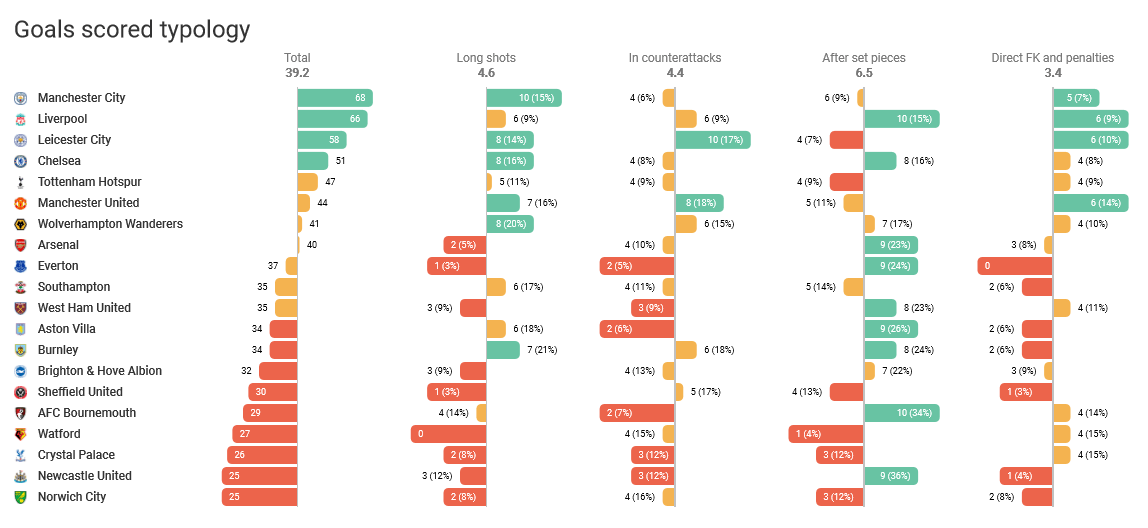
In the current season, Leicester City played 8 different tactics formations: 4-1-4-1, 4-3-3, 4-2-3-1, 4-3-1-2, 3-5-2, 5-3-2, 4-3-2-1 and 3-4-2-1. If we break this down further, we see that the most common formation with 53.6% is the 4-1-4-1 formation, next one with 17.1% which is the 4-3-3 formation, the third most used formation the 4-2-3-1 with 10%, the next one is 4-3-1-2 with 7.3%, with 4.8% is the 3-5-2 formation and the least used formations are the 5-3-2, 4-3-2-1 and 3-4-2-1 with 2.4%.
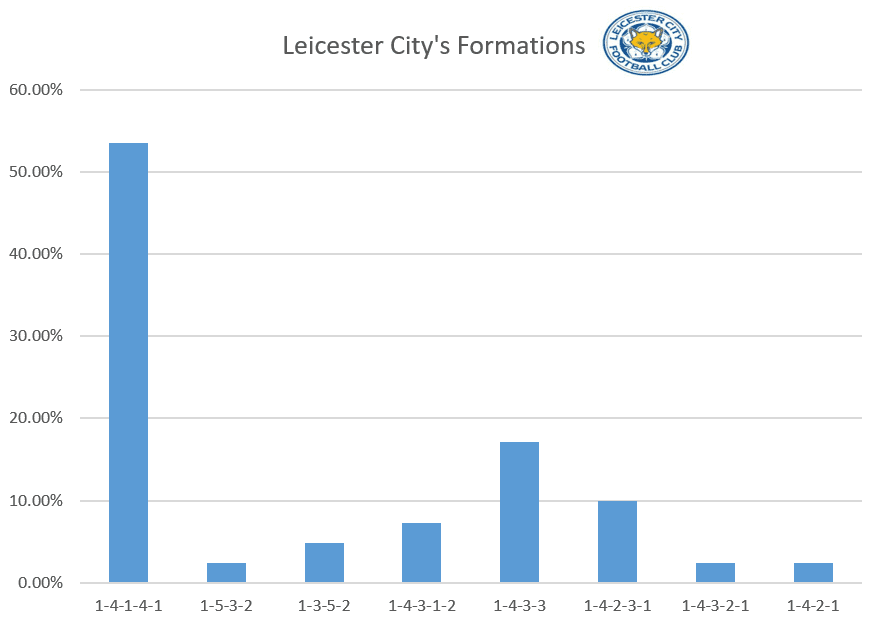
The formations that were analysed and key players
In this piece, the analysis will focus on four formations that Leicester City has used over this season. These are the top three based on the frequency of use: the 4-1-4-1, 4-3-3 and 4-2-3-1, with the fourth one being the 3-5-2. The reason why I chose to analyse those formations was that in the specific game against Newcastle United, Leicester City dominated the ball with 70% possession, but also dominated off the ball and created the ideal circumstances for counterattacks. In the 3-5-2 and 4-3-3 formations, the key players are the two central midfielders that are in front of the deep central midfielder. This is because they were the first players that were receiving the ball after a challenge in the middle third of the field. Moreover, they were close to their teammates when they were pressing high as they had to support them, if needed, in the transition game. In the 4-1-4-1 formation, the key players are the two central midfielders and the striker. The duties and the responsibilities of the central midfielders are the same as the two previous formations. The difference here is the role of the striker, as there are times where he comes deep to support and create space for his teammates, but he also must have the speed to play on the shoulder of the last defender and take advantage of his physical characteristics. In the 4-2-3-1 formation, the key players are the attacking midfielder and the two wide attacking midfielders as they were coming deep and inside to support the team off the ball. Those were the players that receiving the ball after their teammates regained possession. A common task for every key player was to transfer the ball into the final third quickly: that was something that Leicester City usually achieved in about 5 to 9 seconds, on average.
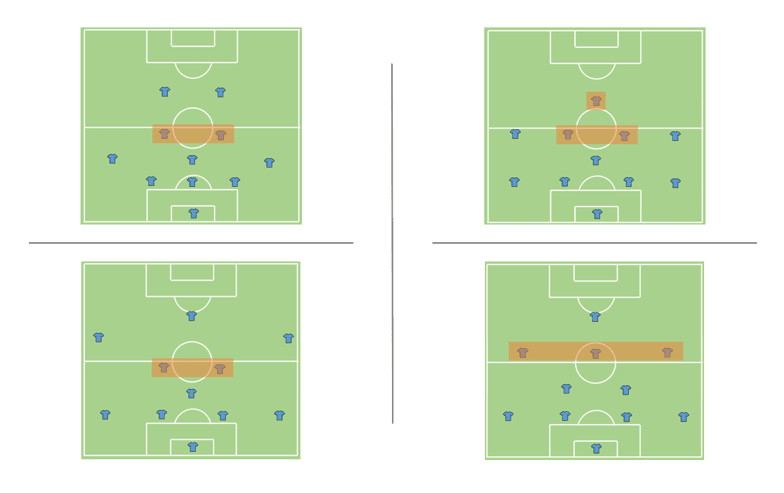
Principles off the ball
Breaking down players’ movements when they do not have possession, it can be seen that they are preparing the field for an upcoming transition game and a counterattack. They are blocking the build-up play of the opponent. On that way, they are isolating key players that have an impact on the game style of the opposition.
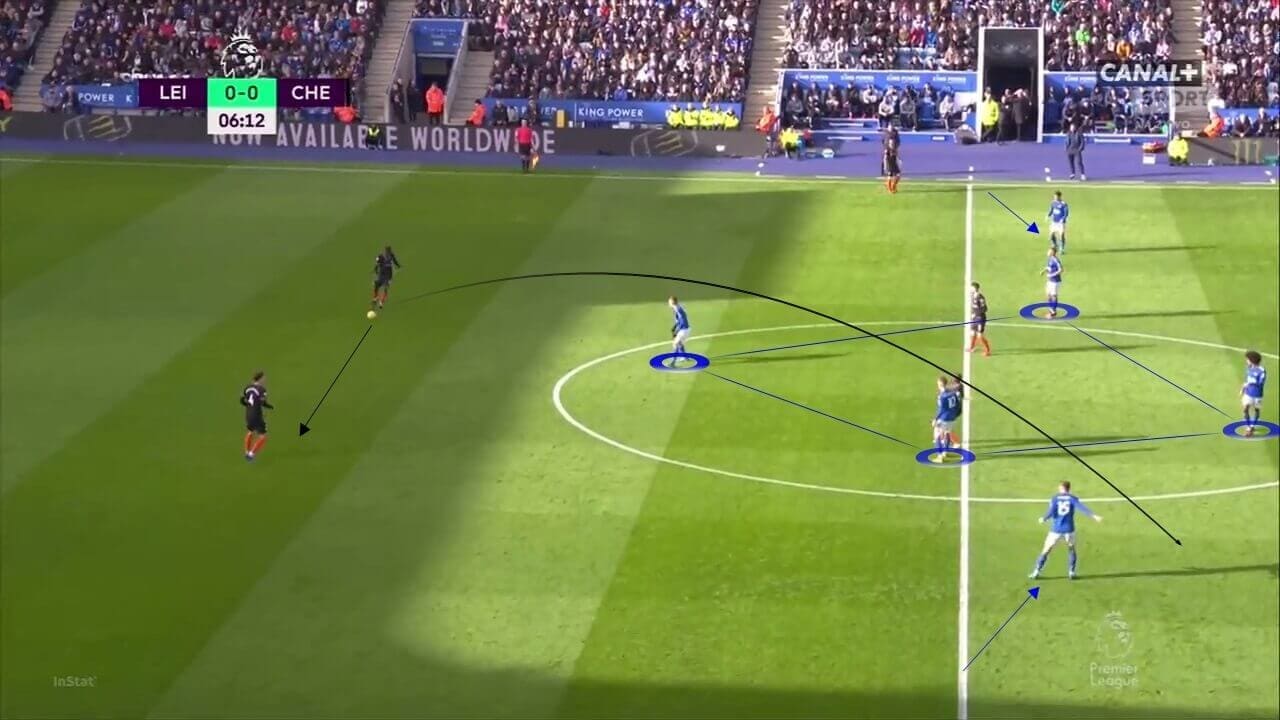
Furthermore, because of this manipulation, the opponent has limited passing options which can lead to a ball challenge in a space where there are key players and lead the offensive transition into the final third. The players that are supporting the area in the middle third of the field are from the attacking and defensive line. If there is a formation with two centre-forwards like in a 3-5-2 the formation, one of the two centre-forwards steps back and supports the area. If the ball is closer to the final third, we will notice that one of the centre-backs step out of the defensive line and try to overload the area.
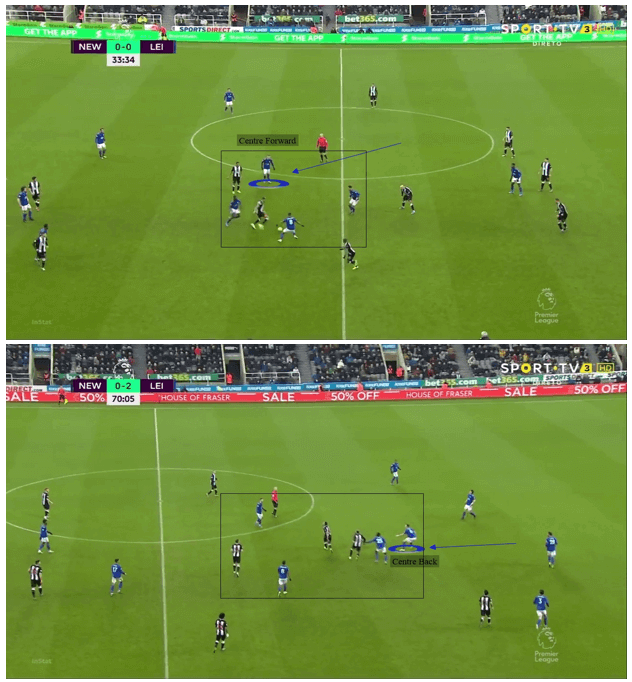
Moreover, players like Wilfred Ndidi make the difference in that area and contribute to the counter-attacking game style of Leicester City. A team that wants to regain possession needs to have a player in the middle third that is good at recovering the ball. This is the duty of Wilfred Ndidi and is doing well if we consider that he is in the top three players of the EPL Premier League in defensive duels. He is the one that wins the challenges and passes to the key players.
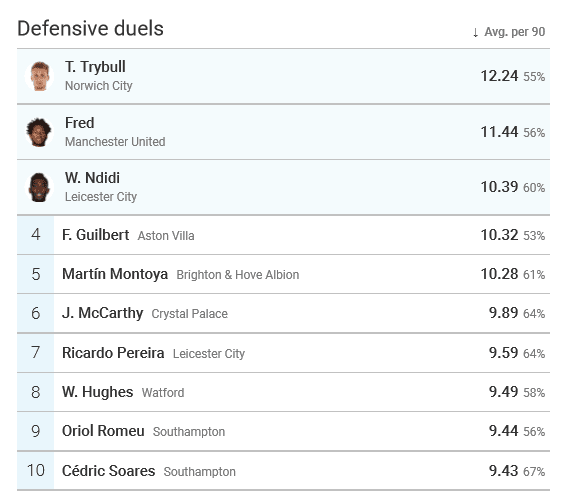
Principles on the ball
The main attribute of Leicester City when winning the ball is a quick and effective offensive transition. Leicester City showed many times that they have players with high speed and technical ability. Leicester City is in the top five teams as far as the high tempo that they maintain during the game is concerned. Manchester City is the team at the top of this table in this category. This fact is a key contributor during a counterattack, as the analysis showed that the players can transfer the ball -from the moment that they regain possession of it- into the final third in 5 to 9 seconds.
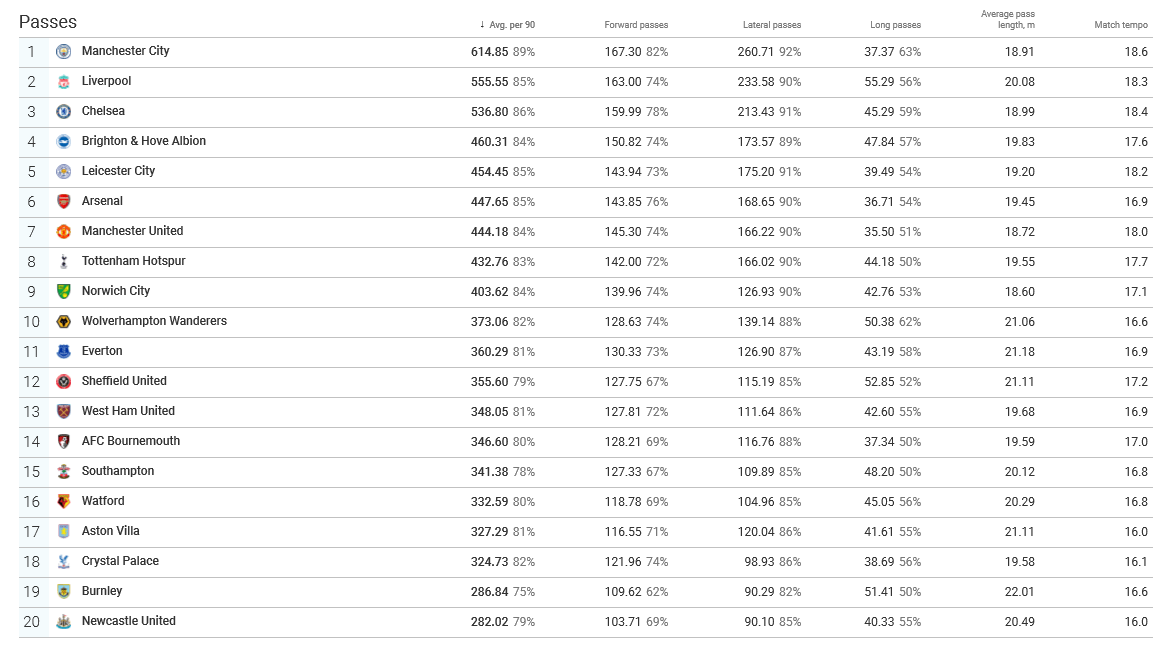 There is diversity from formation to a formation as far as the key players: if there is a formation with a deep centre midfielder and with two centre midfielders in front of him, the key players are the two central midfielders. Such formations could be the 4-1-4-1, the 4-3-3 or the 3-5-2 as previously demonstrated. The key players within a formation with two deeper central midfielders and an attacking midfield line by three players, like the 4-2-3-1 formation, are the attacking midfielder and the two wide attacking midfielders next to him. The points that are common for the key players are that they are coming inside and deep to be closer to the challenges and have more possibilities of
There is diversity from formation to a formation as far as the key players: if there is a formation with a deep centre midfielder and with two centre midfielders in front of him, the key players are the two central midfielders. Such formations could be the 4-1-4-1, the 4-3-3 or the 3-5-2 as previously demonstrated. The key players within a formation with two deeper central midfielders and an attacking midfield line by three players, like the 4-2-3-1 formation, are the attacking midfielder and the two wide attacking midfielders next to him. The points that are common for the key players are that they are coming inside and deep to be closer to the challenges and have more possibilities of
receiving the ball to start the counterattacks.
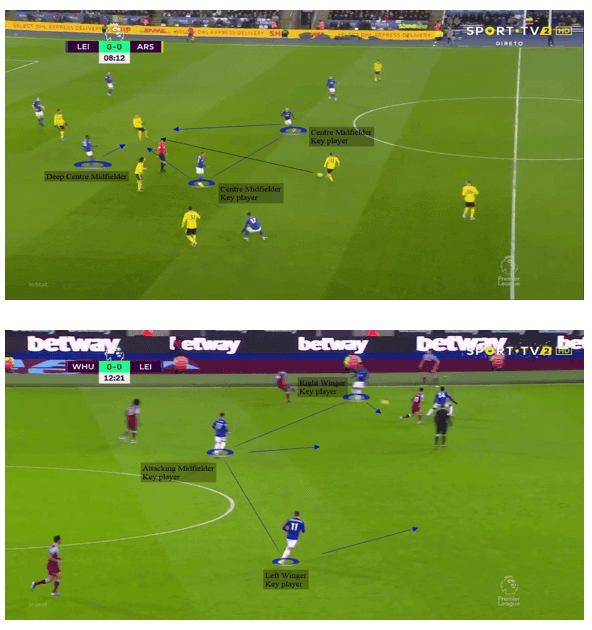 Once the key players have the possession of the ball they have to transfer the game into the final third as quickly as possible. The key players are technically gifted that can demonstrate extreme quality with the ball. For example, James Maddison is a key player for Leicester City’s game style as he is in the top four players for key passes of the Premier League, according to Wyscout, with 2.39 key passes per game.
Once the key players have the possession of the ball they have to transfer the game into the final third as quickly as possible. The key players are technically gifted that can demonstrate extreme quality with the ball. For example, James Maddison is a key player for Leicester City’s game style as he is in the top four players for key passes of the Premier League, according to Wyscout, with 2.39 key passes per game.
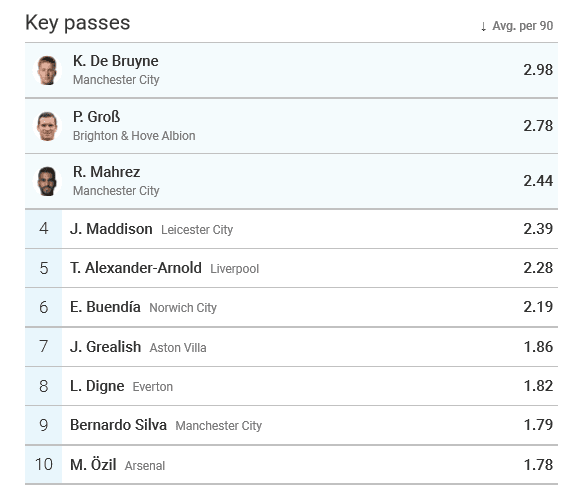 The high tempo that mentioned earlier helps Leicester City with their counter-attacking approach. The electric and technically gifted players that this team has allows the team to transfer the game from the area that they regain the possession of the ball to the final third extremely fast. We can understand the quick offensive transition of this team when the carriers of the ball are players like Youri Tielemans, James Maddison, Ayoze Perez or Demarai Gray. These are players that can carry the ball with electric pace into free spaces.
The high tempo that mentioned earlier helps Leicester City with their counter-attacking approach. The electric and technically gifted players that this team has allows the team to transfer the game from the area that they regain the possession of the ball to the final third extremely fast. We can understand the quick offensive transition of this team when the carriers of the ball are players like Youri Tielemans, James Maddison, Ayoze Perez or Demarai Gray. These are players that can carry the ball with electric pace into free spaces.
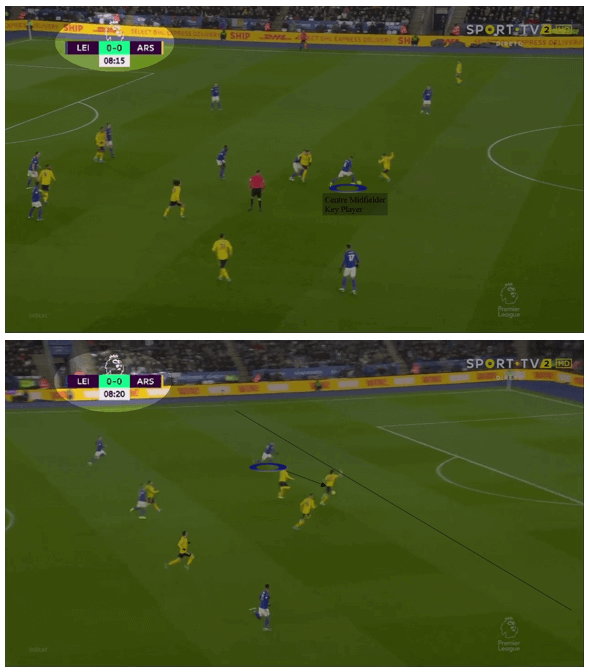 It is important to notice that when Leicester City go into a transition game they usually do it with 1+3 players: the carrier of the ball plus three players, who are the striker, who is moving off the shoulder of the last defender and tries to take advantage of his speed, and the two wingers who are attacking from the flanks and support the carrier for a pass into the wider areas of the field. The more options
It is important to notice that when Leicester City go into a transition game they usually do it with 1+3 players: the carrier of the ball plus three players, who are the striker, who is moving off the shoulder of the last defender and tries to take advantage of his speed, and the two wingers who are attacking from the flanks and support the carrier for a pass into the wider areas of the field. The more options
for the carrier of the ball in situations like these, the more possibilities the team has to score.
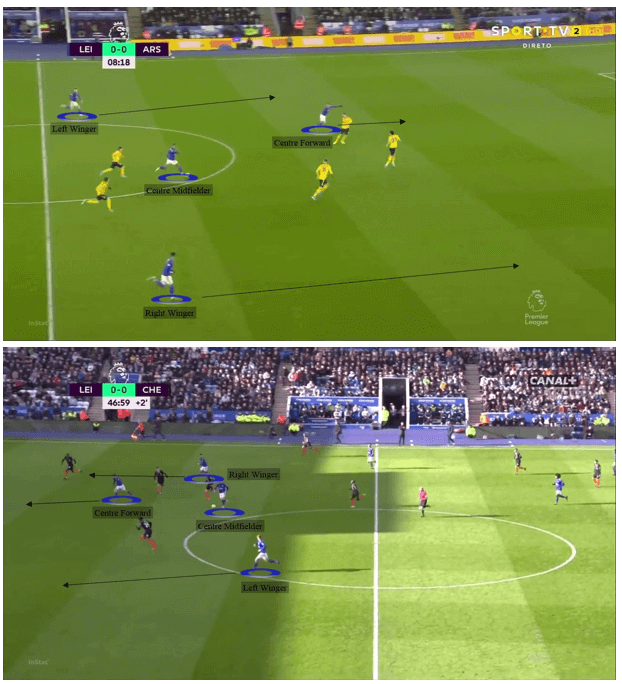
Conclusion
Leicester City is a team which can adjust their playing style based on different types of opponents, but their strength is the counter-attacking approach. They are good at it because of the variety of their offensive transition. Leicester City do not score as many goals as they do on the counter-attack through luck, as they make sure that they have a lot of key players for their transition game near the challenges and these players are very gifted to transfer the game into the opponent’s half. Overall, I believe that Leicester City is one of the best proponents of a counter-attacking approach in the league, and perhaps even in Europe.





Comments